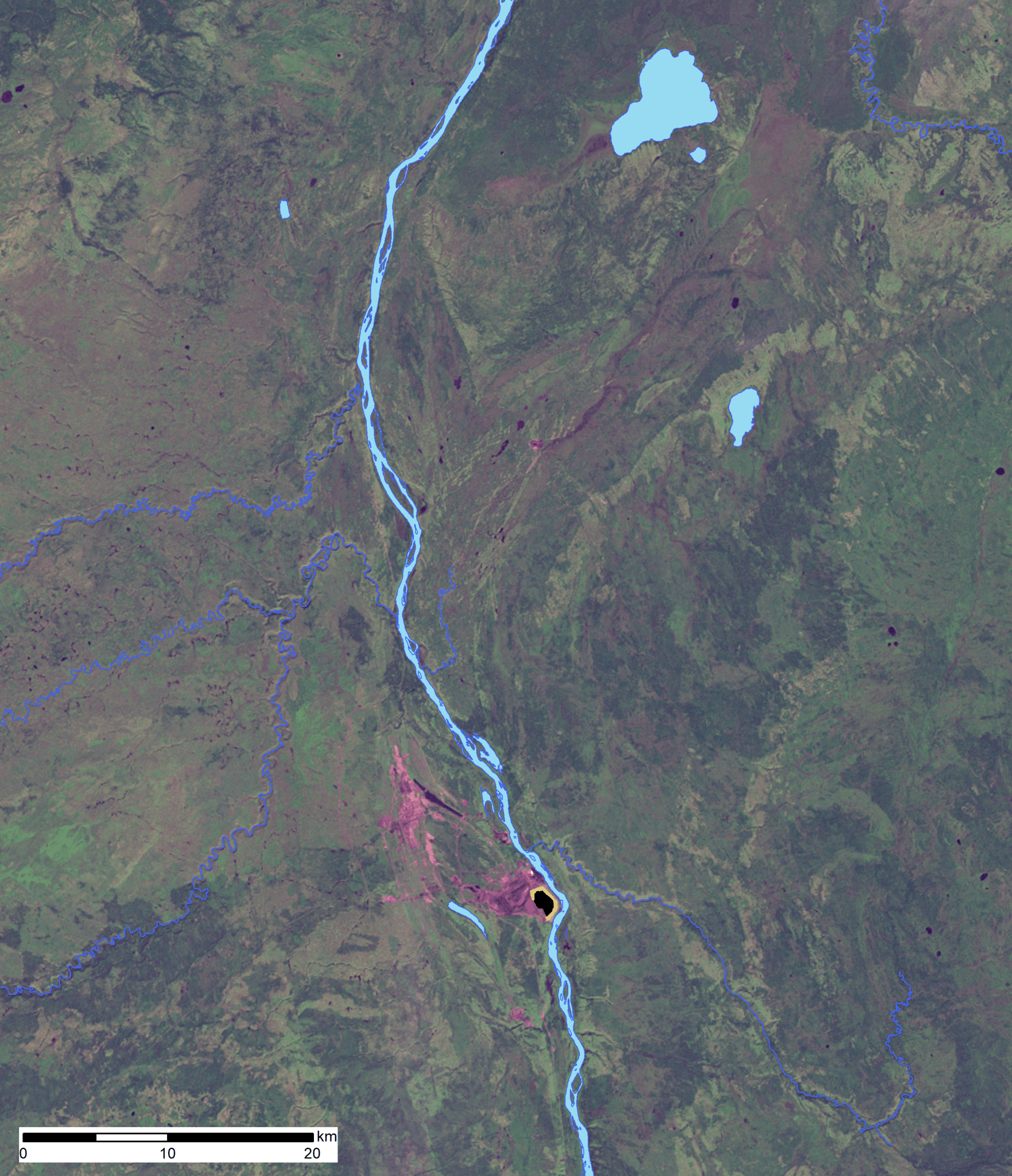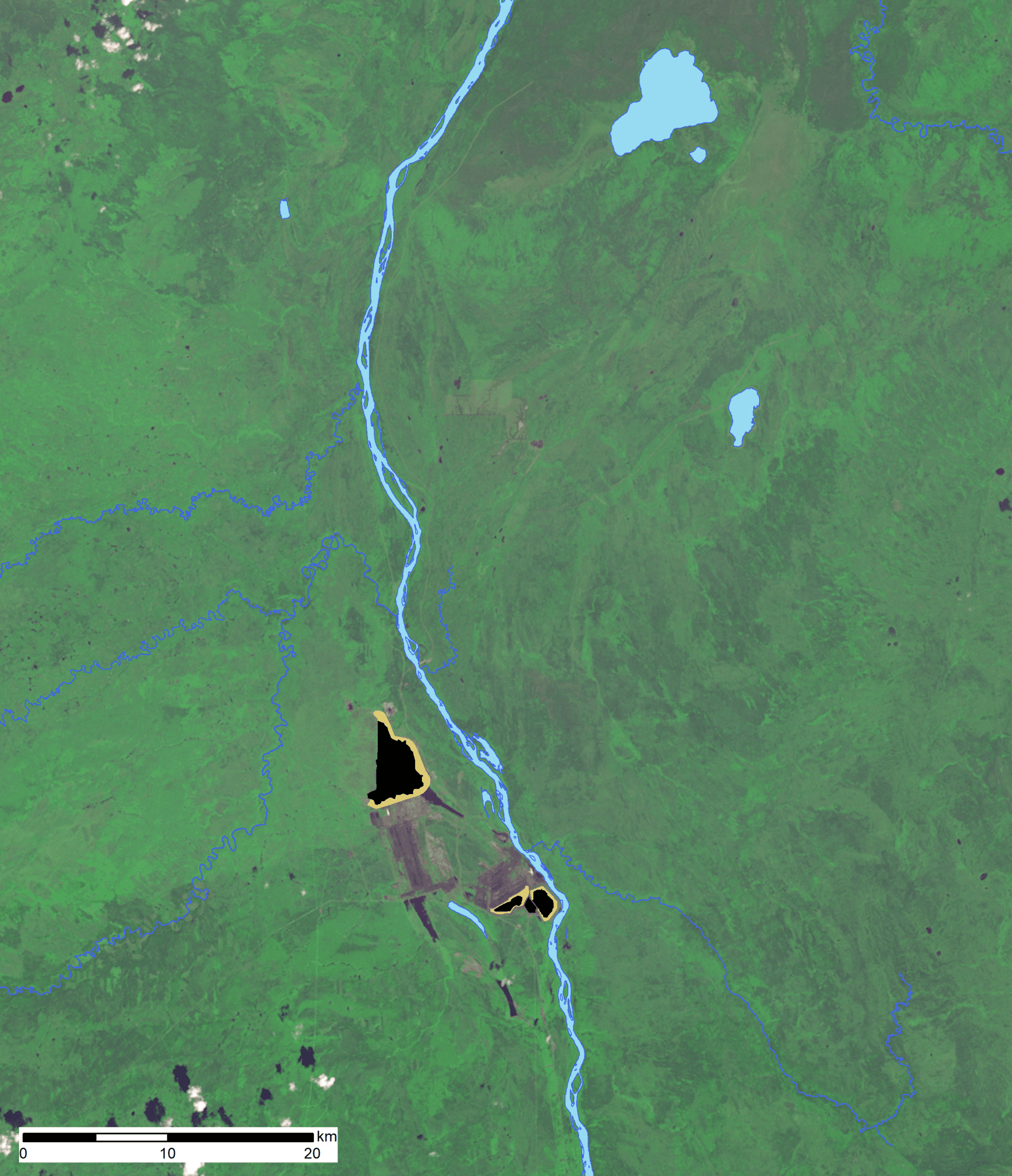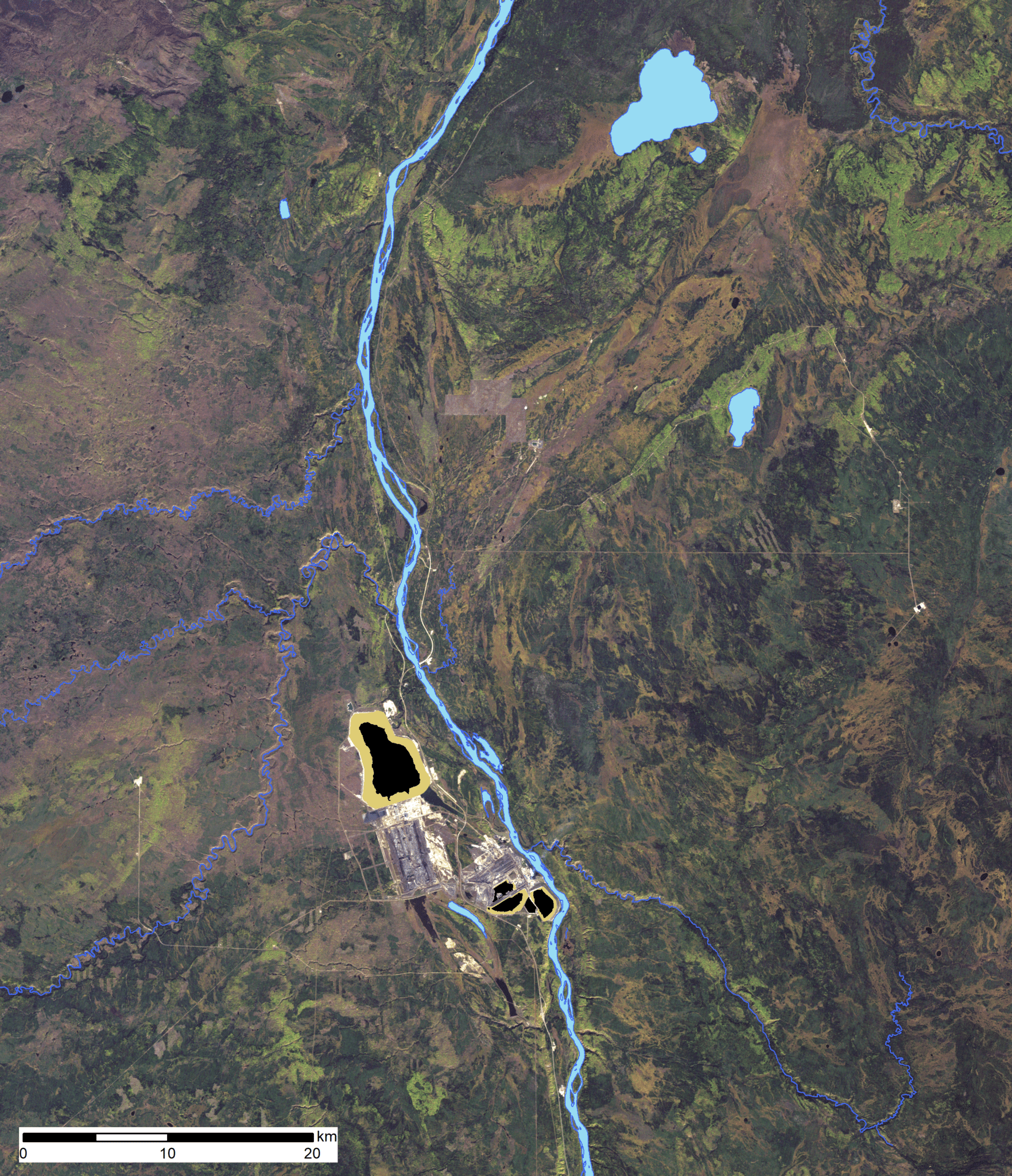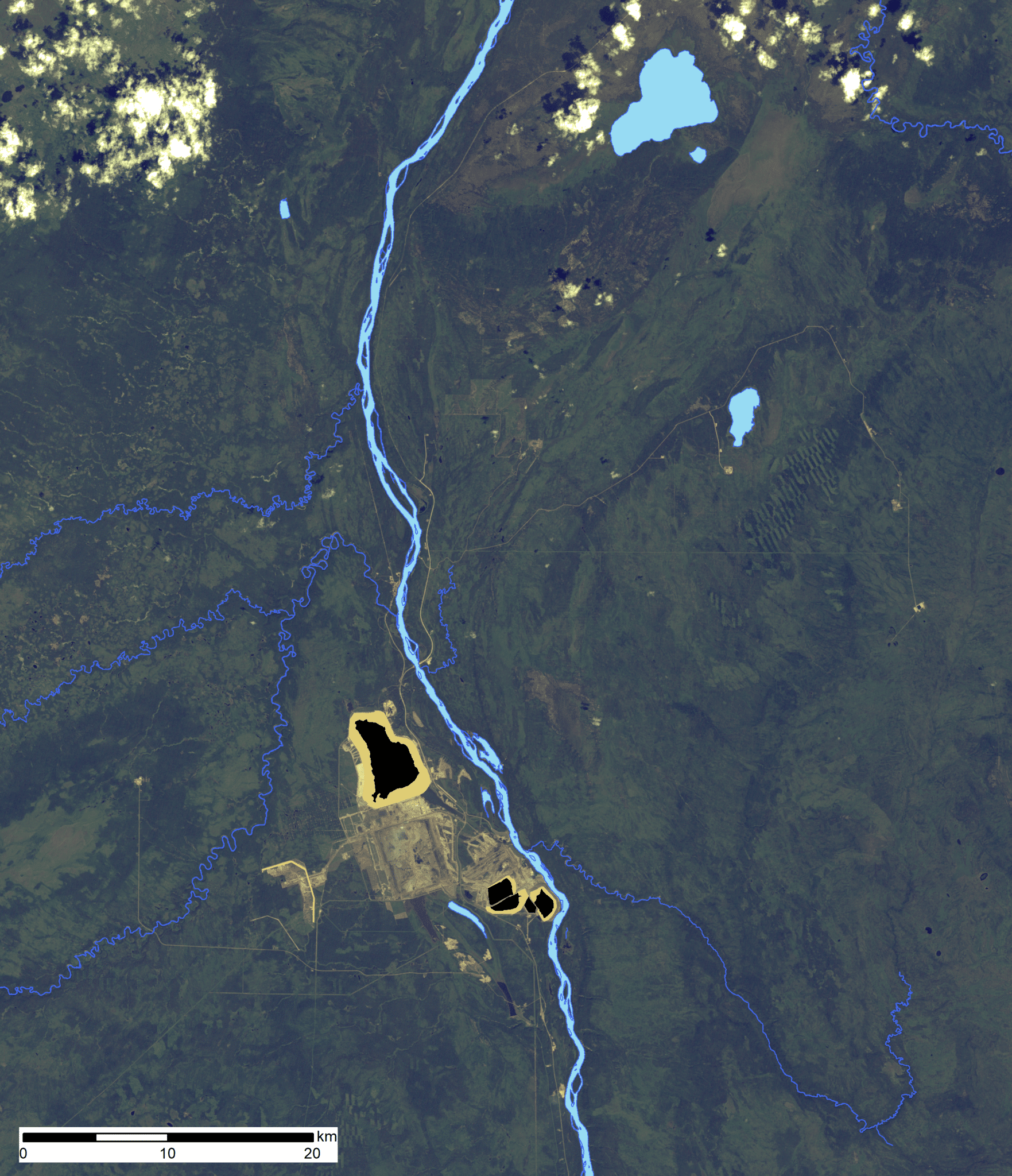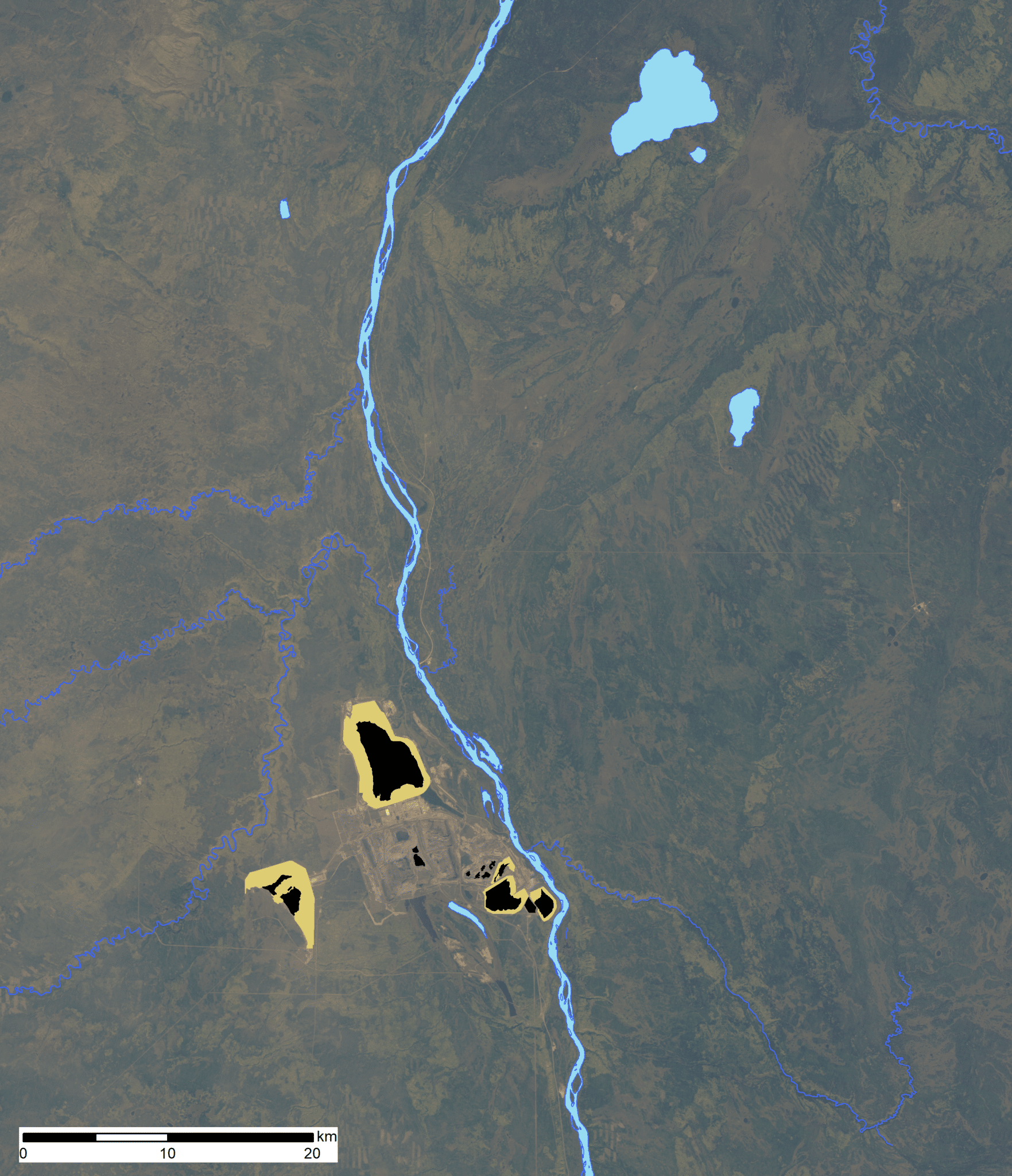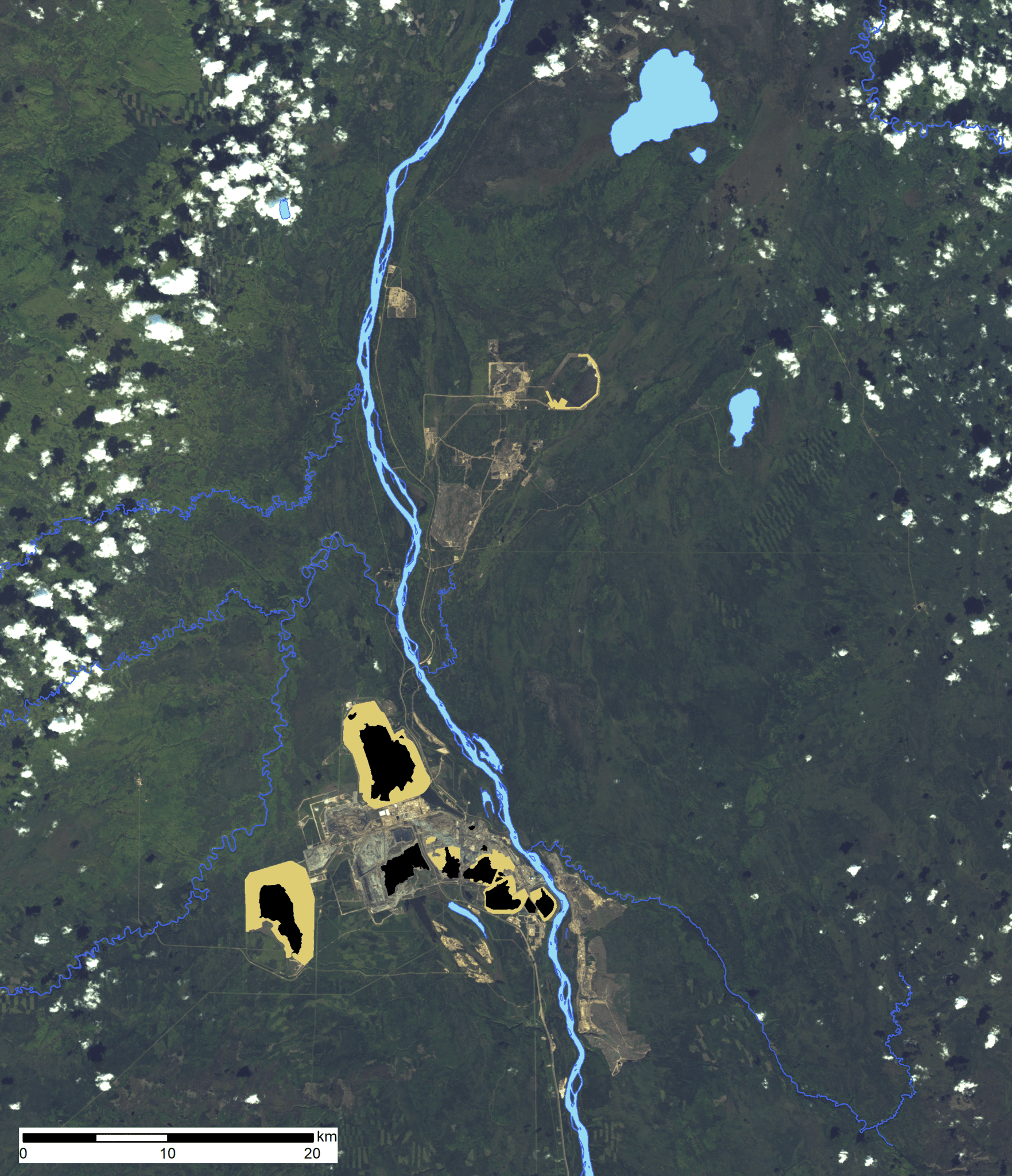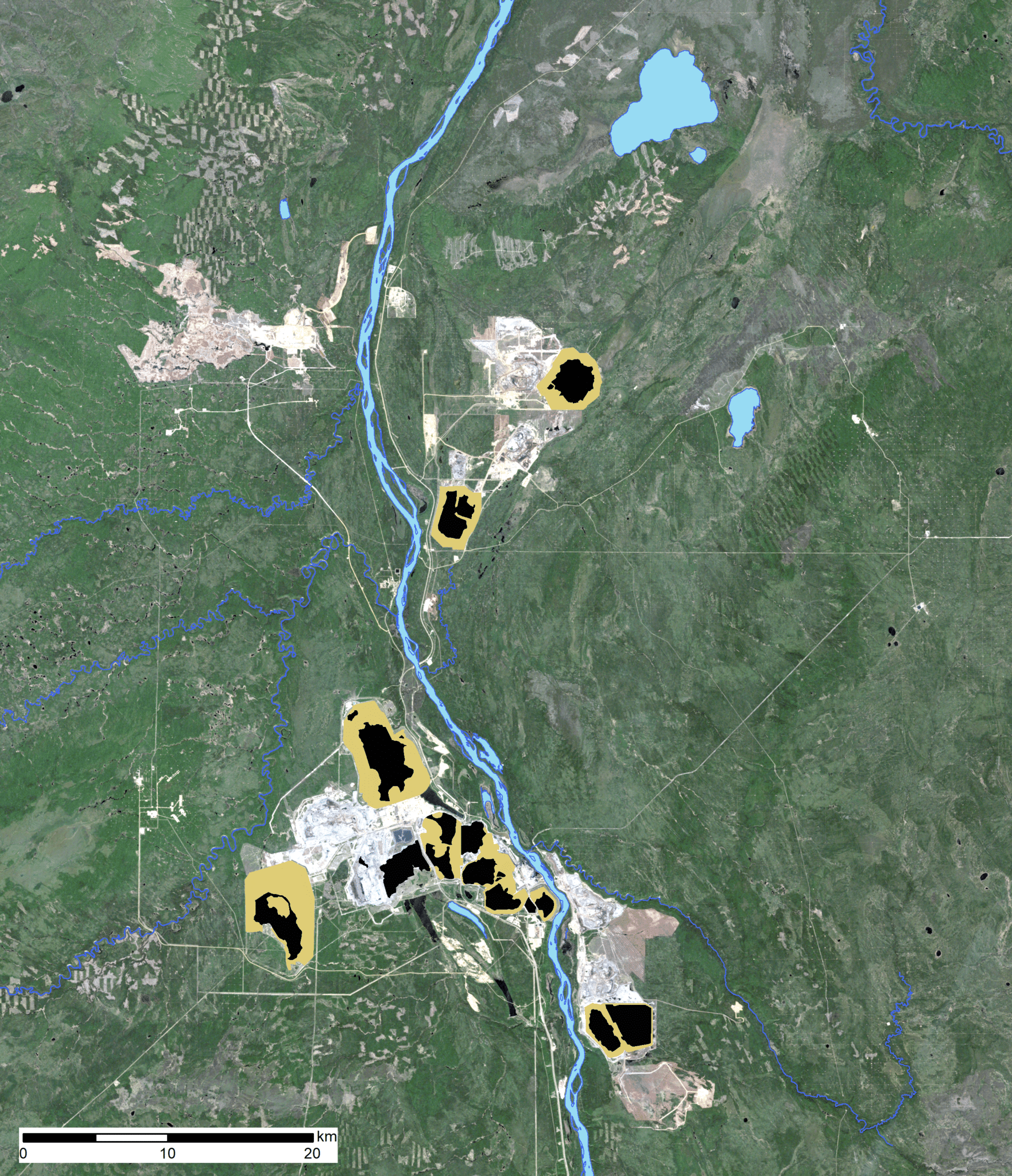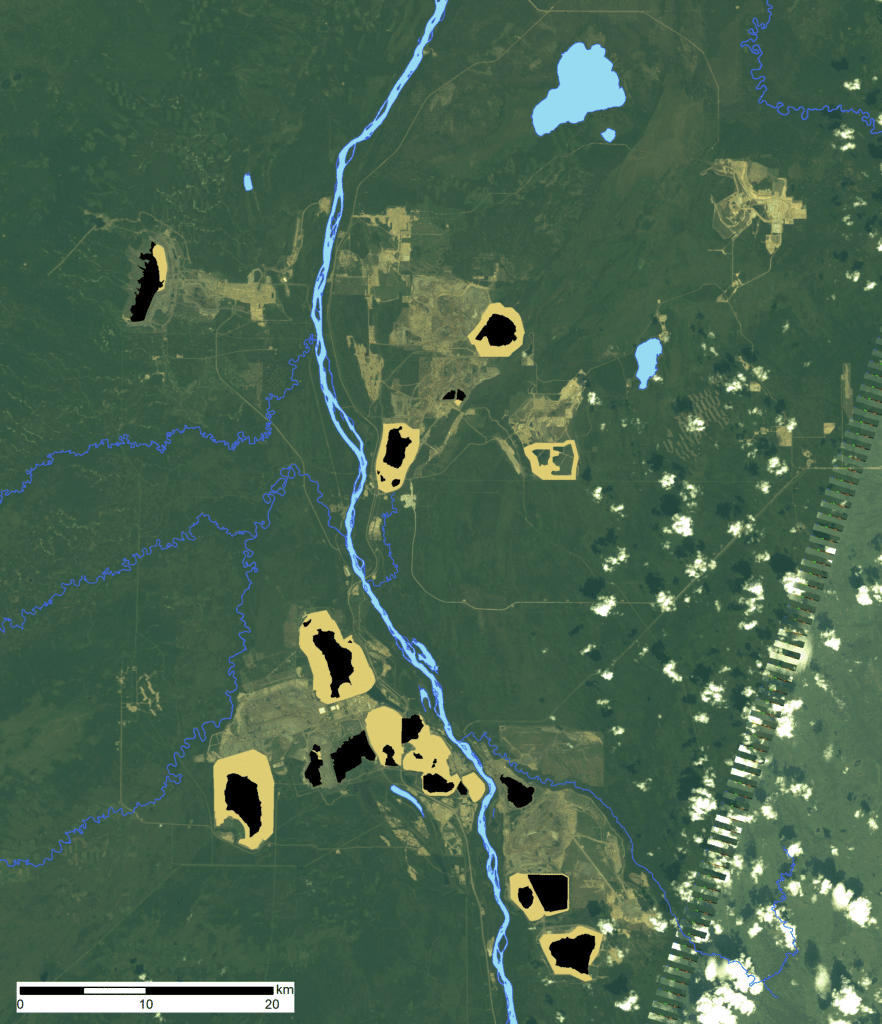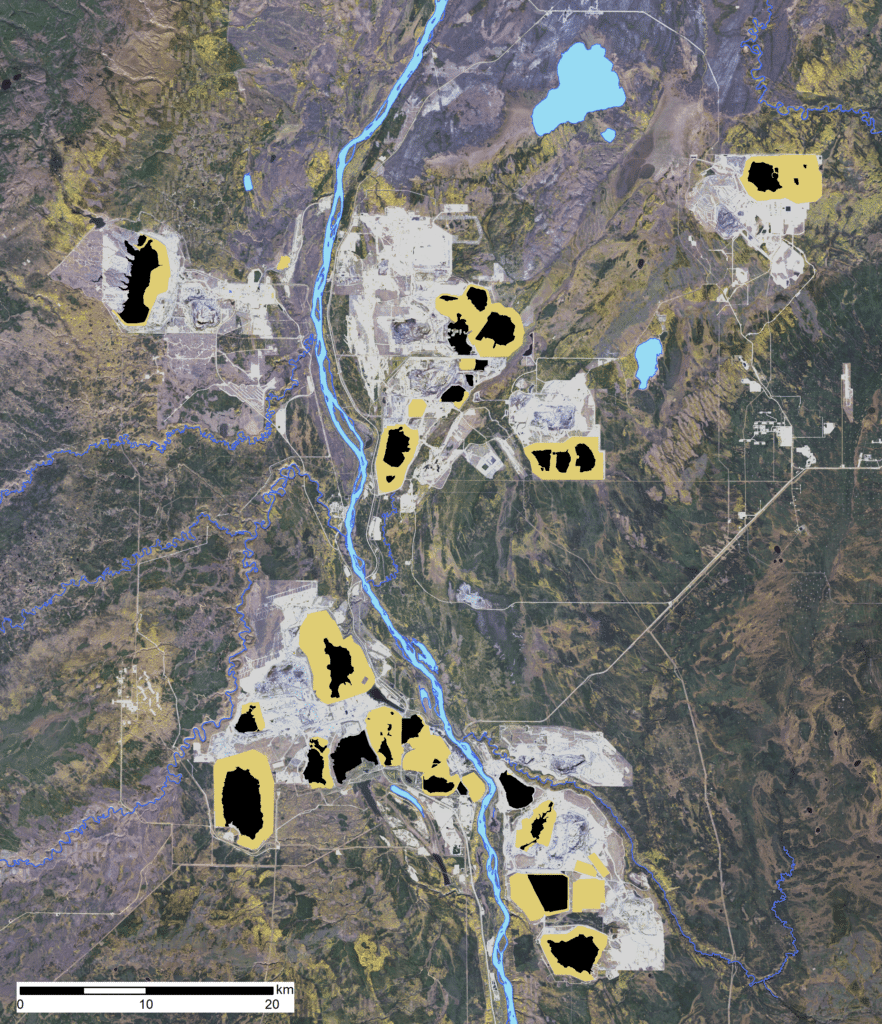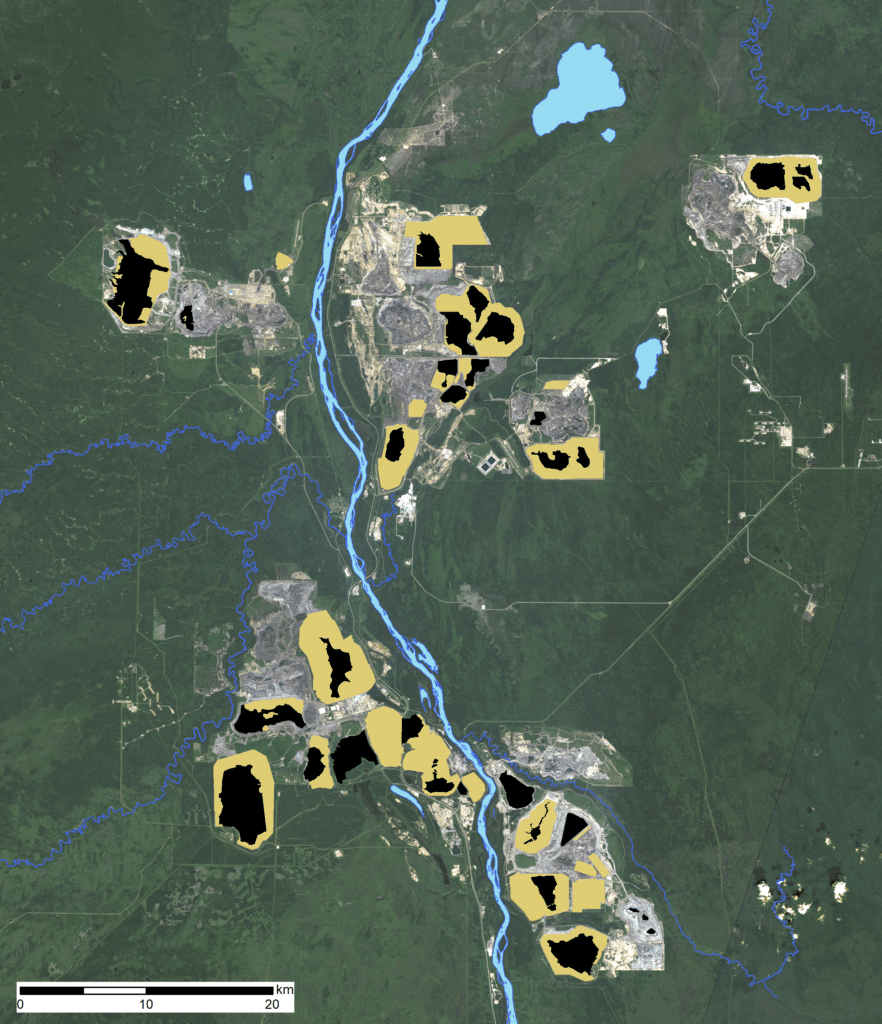What are oil sands tailings ponds?
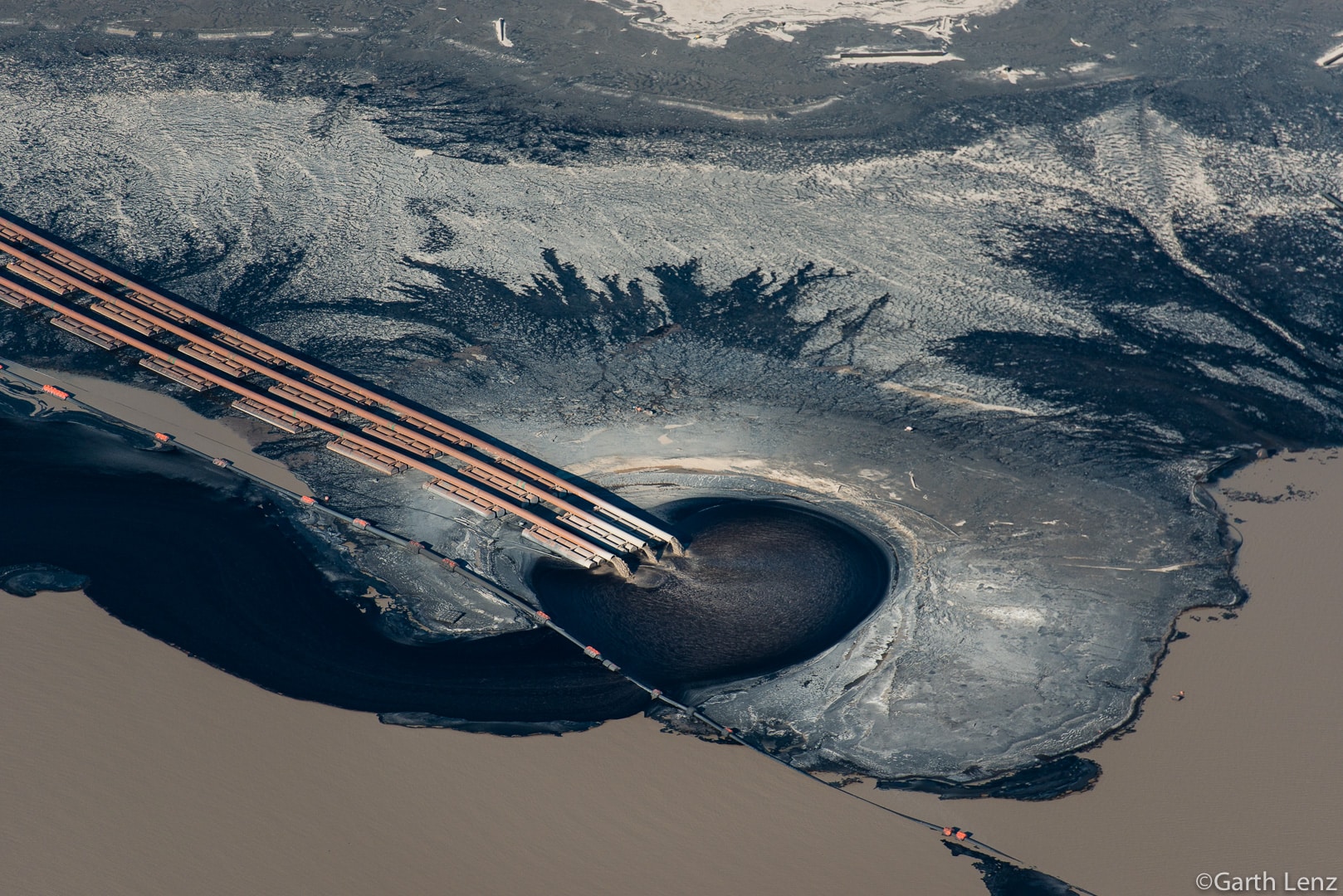
The oil sands region lies in northern Alberta, where decades of mining in the oil sands has left a pervasive legacy of harm to the environment and to the people surrounding and downstream of the area. “Tailings” are the waste fluids of the oil sands extraction process – a byproduct of separating bitumen from clay, sand and silt using high volumes of water and chemicals. They are stored as large open-air reservoirs of fluids using dams and built-up walls, which are called “tailings ponds”. The walls of tailings ponds can be as large as 100-meters tall.
Tailings ponds function as a method to allow the settling of solids to the bottom of the ponds and separation from the water over long periods of time. But not all the solids easily settle. It can take up to 150 years for some solids to naturally settle and completely separate from the water. This settlement process (which is extremely slow) is a problem because industry has not shown they can safely store tailings without causing environmental harms.
The fluid in oil sands tailings ponds contain many toxic compounds, such as benzene, lead, mercury, arsenic, nickel, vanadium, chromium, and selenium. Fresh tailings fluids have bitumen (also known as asphalt) that can float on top of the waste fluids – it is the characteristic thick, black, and sticky substance that glistens on top of tailings ponds. Other concerning contaminants include naphthenic acids and polycyclic aromatic hydrocarbons (compounds that can be carcinogenic). All of these compounds are found at higher concentrations in tailings ponds than in the natural bodies of water that surround them. At elevated or repeated exposures, these contaminants can be incredibly dangerous to people, wildlife, and water ecosystems.
Take Action
Advocate for a healthy boreal forest
Oil sands tailings ponds are a growing problem for which the industry has no safe or community-supported solution. Become an advocate for a healthy boreal forest and get tailored updates on oil sands in Alberta.
photo: Garth Lenz
How big are oil sands tailings ponds?
Despite what the name might suggest, tailings “ponds” are massive features on the landscape. As of 2020, the total fluid tailings area was over 119 km2, which would cover the West Edmonton Mall over 240 times.
The largest tailings pond is Syncrude’s “Southwest Sand Storage”,roughly the same size as the land footprint of the Edmonton International Airport. And that’s just one pond! Altogether, all thirty tailings ponds placed end-to-end would stretch from Calgary to Canmore.
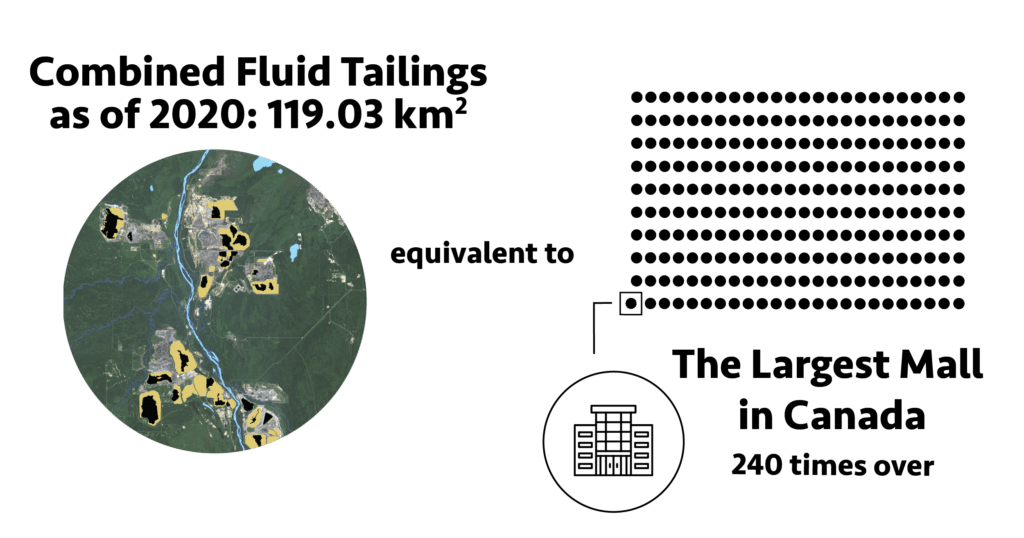
The Impacts of Tailings Ponds
Surrounding & downstream communities
The oil sands industry impacts surrounding and downstream towns and communities through contamination that travels in the rivers and through the air, as well as loss of habitat and access to areas where oil sands mines operate.Impacts to water
Tailings ponds are known to leak into groundwater and seepage has been detected at monitoring sites extremely close to nearby surface waters.Impacts to wildlife & biodiversity
The boreal forest of northern Alberta is a natural collection of wetlands, rivers, streams, lakes, and ponds–even containing one of the world’s largest inland freshwater deltas.Climate change
There are significant losses in carbon-storing peatlands and old-growth forests by oil sands mines and their tailings ponds.
photo:Garth Lenz
Impacts to surrounding and downstream communities
The oil sands industry impacts surrounding and downstream towns and communities through contamination that travels in the rivers and through the air, as well as loss of habitat and access to areas where oil sands mines operate. Impacts have been shifted onto these communities to bear, predominantly Indigenous communities. Tailings ponds have resulted in a loss of access to traditional lands by Indigenous communities, fundamentally changing traditional practices such as land-based teaching, hunting and fishing, medicine harvesting, and community gatherings.
Pollutants also impact communities surrounding and downstream of the oil sands through air and water. Atmospheric contamination can cause poor air and water quality. Research has shown atmospheric deposition of inorganic contaminants, such as mercury, and Polycyclic Aromatic Hydrocarbons (PAHs) have increased since oil sands development began. Some pollutants can reach more than 100 km downwind of the oil sands.
Within the greater oil sands region, there are fish consumption advisories for fish species, due to concerns of elevated methyl mercury concentrations in the fish. Rates of fish abnormalities and deformities are higher than expected in downstream waters. Downstream communities are at risk of adverse health effects, especially if they drink the river water and eat resources within which contaminants have bioaccumulated. Many community members no longer trust the waters.
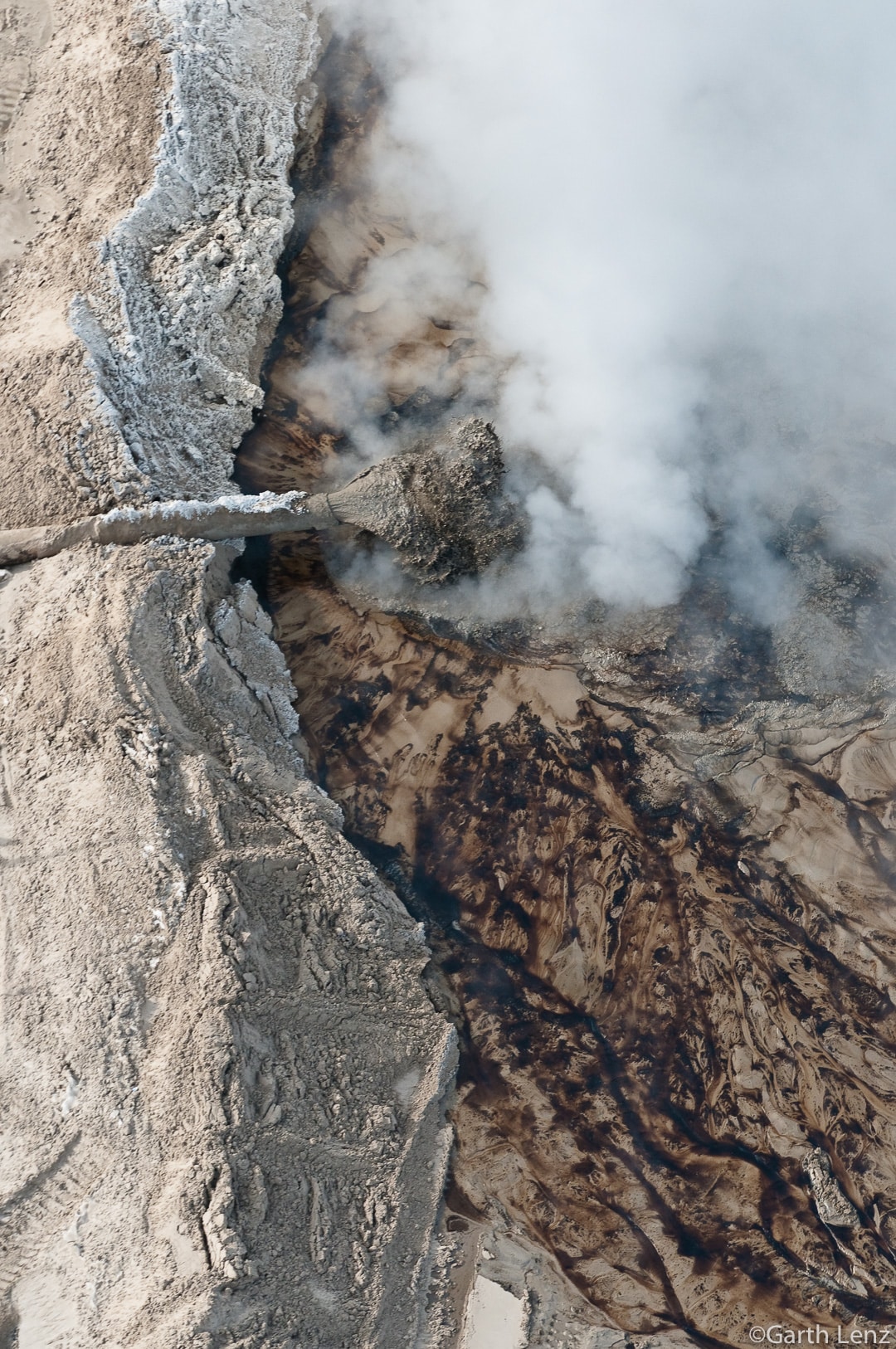
photo:Garth Lenz
Impacts to water
Tailings ponds are known to leak into groundwater and seepage has been detected at monitoring sites extremely close to nearby surface waters. Evidence of leaking tailings ponds was first documented in 1973 by industry. More recent estimates have indicated the tailings leak over 11 million litres per day. Impacts of the leaking ponds have not been quantified, as industry and government data on the rate of leaking is not available to the public.
Just how close are tailings ponds to natural rivers Syncrude’s “Aurora Settling Basin” tailings pond is a mere 1 kilometer from the Muskeg River.
Impacts to wildlife and biodiversity
The boreal forest of northern Alberta is a natural collection of wetlands, rivers, streams, lakes, and ponds– even containing one of the world’s largest inland freshwater deltas. It is a highly interconnected water and wetland system, fundamentally impacted by tailings ponds that disrupt and alter the biodiversity of the watershed.
Tailings pose a threat to migratory birds, who fly long distances in sometimes adverse weather conditions and need to land on water bodies to rest and feed. Birds can easily mistake the tailings “ponds” as safe short-term rest stops: they are large bodies of fluid (that appear to be water), often ice-free because of the warmth of industrial waste fluids, with the added attraction of artificial light sources. During poor weather conditions, birds are particularly likely to become attracted to landing in tailings “ponds”.
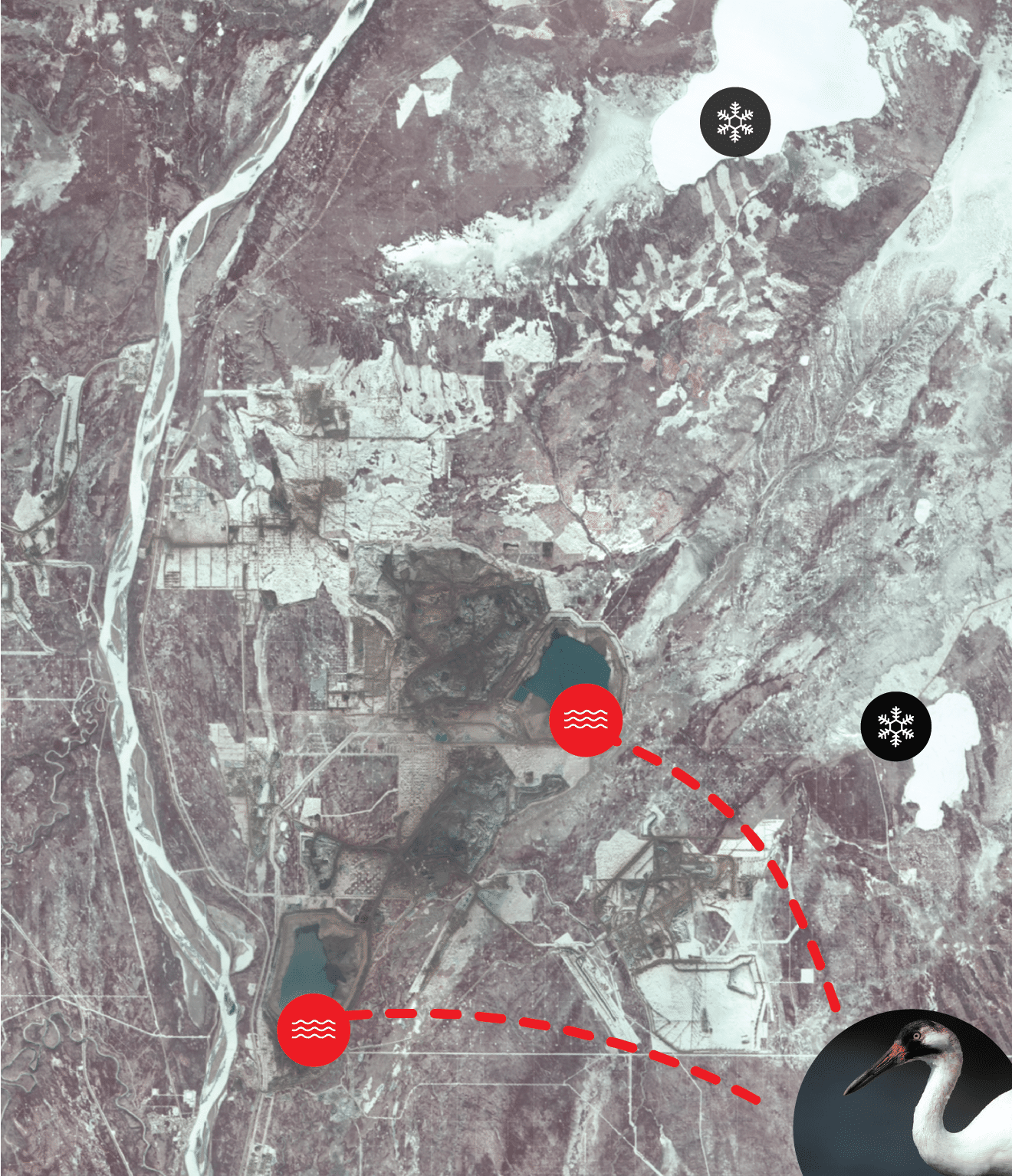
Lethal Bird Landings
At-Risk Bird Species
Deadly bird landings are a persistent issue that plagues industry operators. Syncrude, in particular, has had a dark history with lethal bird landings: In 2008, an estimated 1600 ducks died after landing in a Syncrude tailings “pond”. They were fined $3 million for their negligence. But only two years later, another 230 birds died in the exact same “pond” and then another 30 in 2014.
Tragedy struck again in 2015, when Syncrude once again caused the death of thirty-one great blue herons, a protected migratory species, for which they were charged $2.7 million in fines.

photo: Todd Powell, Alberta Fish & Wildlife
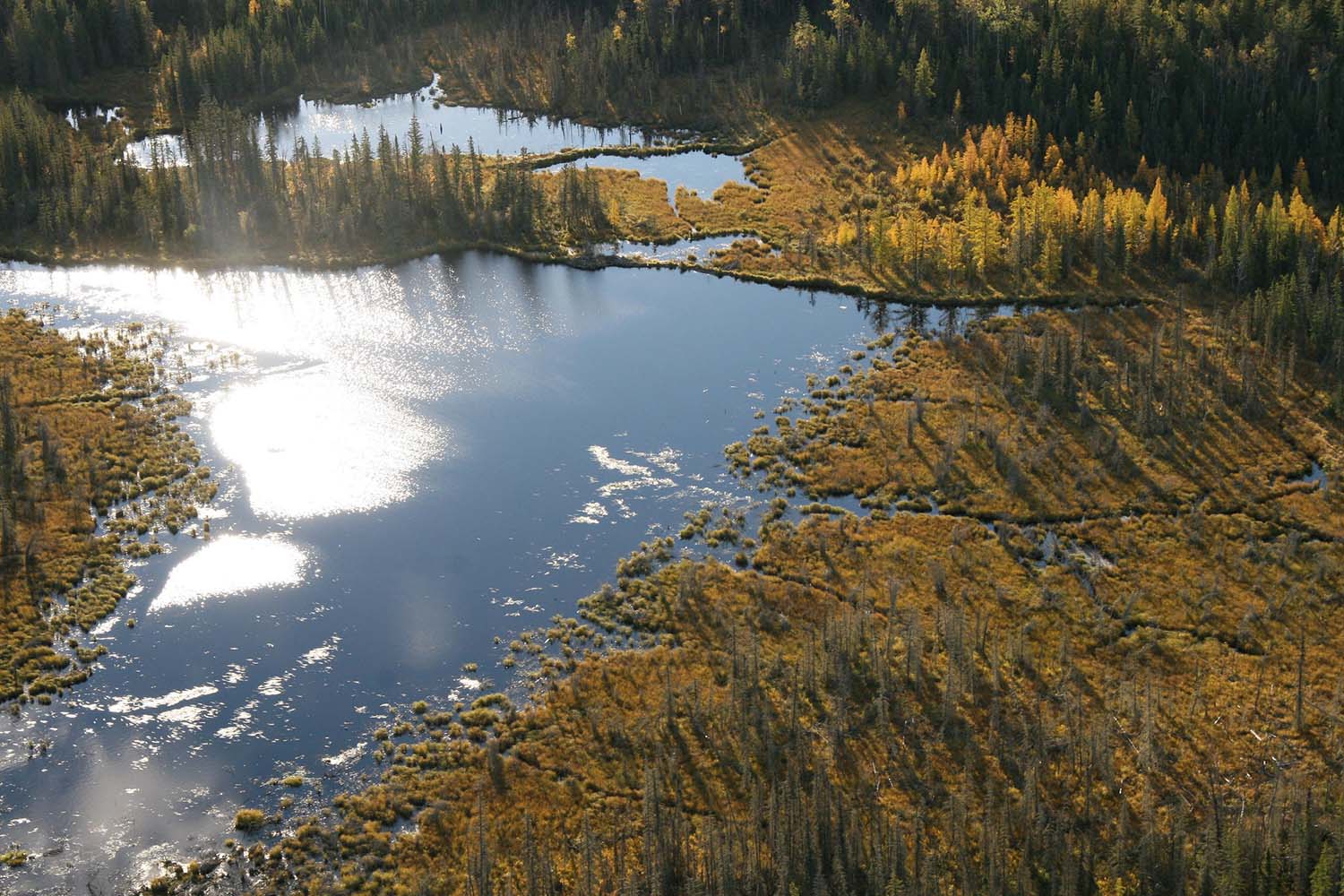
Impacts on climate change
Peatlands are a special type of wetland that are especially good at storing carbon. Sadly, there are significant losses in carbon-storing peatlands and old-growth forests by oil sands mines and their tailings ponds. The peatland losses impact Canada’s opportunities to use nature to store carbon and combat climate change.
Large swaths of peatlands are irreversibly lost by development, as reclamation of peatlands (bogs, fens) is rarely achieved. One study calculates the impact of oil sands mines will result in a staggering irreversible loss of nearly 30,000 hectares of peatland.
The mining of oil sands creates massive amounts of greenhouse gas emissions, which challenge Canada’s commitments to reduce carbon emissions to address climate change. In addition to emissions created through operation of the mines and their facilities (through extraction, upgrading and refining of bitumen) tailings ponds can also emit greenhouse gasses. Greenhouse gases are emitted by the biodegradation of leftover bitumen and other heavy metals in the tailings ponds. Tailings ponds can persist for decades, meaning their carbon emissions also persist for as long as they remain in open-pit storage.

Industry has no plans to stop creating new tailings ponds, and so far, tailings reclamation options are not proven to come without other significant impacts.
50 Years of Sprawling Tailings
Mapping decades of devastation
A joint report released by the Canadian Parks and Wilderness Society, Northern Alberta (CPAWS) and Environmental Defence (EDC) provides a new analysis of the unprecedented growth of tailings in Alberta’s oil sands. The time series of tailings areas mapped in this report are the first of their kind to be made publicly available, as industry and government do not provide public analyses of these kinds of data. The key findings include:
- The footprint of all tailings is now 300 square kilometers – about 2.6 times the city of Vancouver.
- Since 1975, the tailings area has grown significantly, despite new policies aimed to reduce them. A stark increase has been seen since 2005 when the average 5-year tailings growth rate rose to 42 per cent.
- While industry is supposed to reclaim tailings “ponds” back to their pre-disturbance state, less than 0.1 per cent of the oil sands has received a formal reclamation certificate from the provincial regulator.
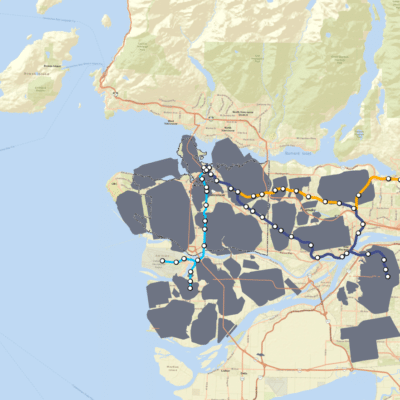
Oil Sands Tailings Reclamation
All oil sands projects are approved with conditions that the mine and tailings will be reclaimed to “equivalent land capability,” meaning that the land can support land uses similar to those that existed before the industrial activities.
The province’s definition for reclamation is purposefully vague and incomplete. It makes room for regulatory approvals for the irreversible destruction of peatlands in project areas. The regulations fail to focus on how the primary purpose of reclamation should be to reduce and eliminate known environmental harms and support Indigenous traditional practices.
One of industry’s most common approaches for tailings reclamation is to create an “end pit lake”, done by refilling open-pit mines with tailings and capping them with freshwater. The idea is that the fine tailings will condense and settle to the bottom of the mine and create the lake bottom. End pit lake technology has not been proven, though they are used by industry all the time.

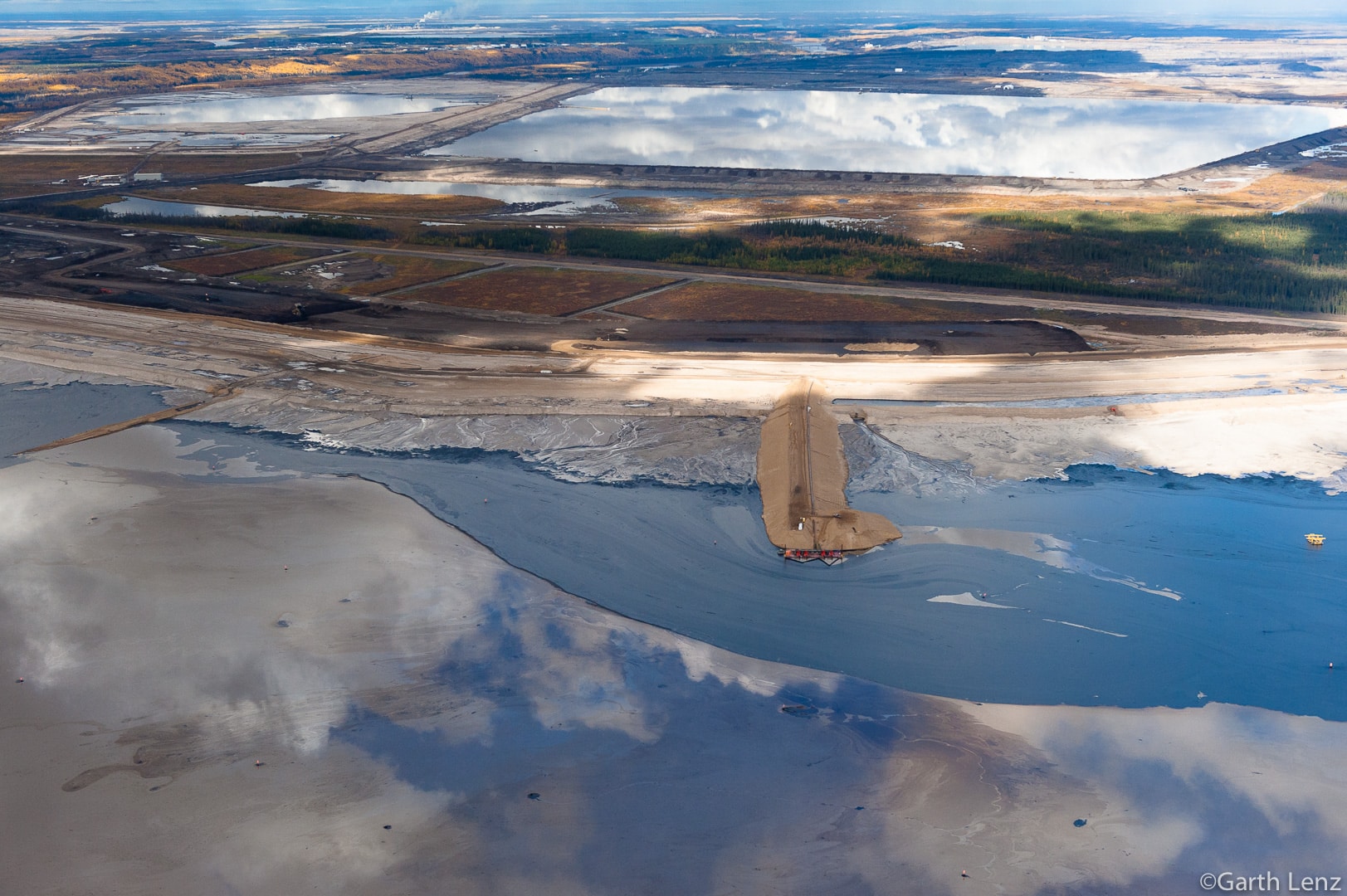
photo: Garth Lenz
Alternative tailings reclamation technologies
Alternative tailings reclamation technologies focus on solutions that will reduce industry’s inventory of tailings fluids, prioritizing approaches that will result in reducing the volume of tailings held by the company. For example, accelerating the dewatering process so the tailings turn from slurry into sludge, and sometimes further dried into “cakes” which can be transported elsewhere.
These technologies are rarely verified by independent researchers outside of industry and have so far yielded no clear winners for safely treating tailings. Outcomes of research projects are not always transparent. There are no requirements for project results, or project progress, to be publicly shared or published in peer-reviewed journals.
Because the path forward for a safe reclamation is unclear, we emphasize there is urgency for our governments to stop approving new oil sands projects and new tailings ponds while such a pervasive issue remains unresolved.

photo: Garth Lenz
Take Action
Advocate for a healthy boreal forest
Oil sands tailings ponds are a growing problem for which the industry has no safe or community-supported solution. Become an advocate for a healthy boreal forest and get tailored updates on oil sands in Alberta.
photo: Garth Lenz
STAY INFORMED
Protect the Wilderness
To receive news and updates from CPAWS Northern Alberta, including opportunities to get involved, join our mailing list below.

